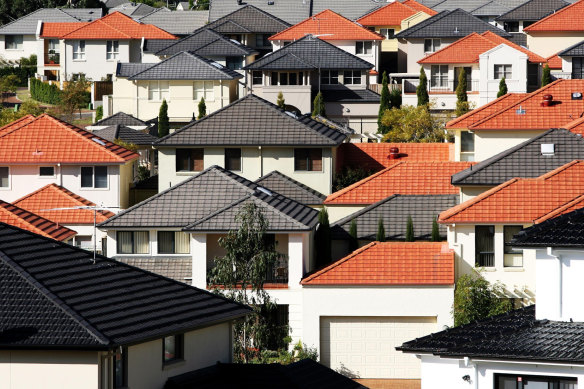The pandemic tree-change appears to be over as workers return to the inner cities to spend at least some of their week in the office, driving up advertised rental prices in Sydney and Melbourne while rental growth in regional Australia has peaked.
National Housing Finance and Investment Corporation analysis shows growth in advertised rent in the regions – which jumped about 30 per cent in some areas as demand for country homes skyrocketed during COVID-19 – started to slow over the year to October.

And while vacancy rates across the country remain ultra-low, Sydney in particular has experienced a shift in the fewest available rentals from the outer suburbs back to the inner city.
“If you look at the regional areas and the rental growth, it’s fallen quite precipitously recently, particularly in regional NSW and regional Victoria,” the corporation’s head of research, Hugh Hartigan, said.
“That suggests that there is an unwinding of the migration patterns that we heard about through COVID.”
NSW
Sydney’s vacancy rate is around 2 per cent.
Vacancy rates were lowest in the cheaper outer local government areas through the earlier part of the pandemic, and those areas saw the strongest growth in advertised prices. More recently, there have been big shifts in advertised prices in inner-city LGAs.
In Burwood and Strathfield, where vacancy rates are around 1.1 to 1.2 per cent, advertised prices rose by about 20 per cent over the year to October. Further out, in the Blue Mountains, Coffs Harbour, the Hawkesbury and Kiama, asking rents rose 5 to 7 per cent over the same period.
Vacancy rates in regional NSW remain at their lowest level in more than a decade but annual rental growth has slowed to 7 per cent, from 12 per cent in 2021.
Victoria
Melbourne’s vacancy rate is not as tight as Sydney’s, at 4.6 per cent, but advertised rents have risen 10 per cent over the past year, according to the report.
“[This is] suggesting upstream rental pressures are building for those tenants already on a lease agreement,” the report said.
In outer-Melbourne council areas including Yarra Ranges, Cardinia and Frankston, advertised rents grew by 6 to 10 per cent over the year despite having the lowest vacancy rates.
Closer to the city, councils such as Boroondara, Hobsons Bay and Maribyrnong had the highest vacancy rates and advertised rents in those areas rose by up to 13 per cent.
Annual rental growth in regional Victoria, while still strong, has halved to 6 per cent, from 12 per cent in 2021.
Elsewhere
Advertised rents have peaked and are slowing in Brisbane, Perth, Hobart, the ACT and Darwin, the report found.
Brisbane’s vacancy rate of less than 1 per cent is tighter than both Sydney’s and Melbourne’s, according to the report, with advertised rents up 16 per cent over the past year to be more than 33 per cent higher than before the pandemic.
Vacancy rates across all South East Queensland councils are less than 1 per cent, and advertised rents are up about 20 per cent in Logan, Ipswich and the Gold Coast.
In regional Queensland, advertised rent growth has eased slightly to 12 per cent, from 14 per cent in 2021.
In Perth, the growth in advertised rents peaked at 18 per cent at the end of 2021, and has slowed to about 12 per cent even as the vacancy rate hovers around 1 per cent, close to record lows. Advertised rental prices have grown by 41 per cent since 2019.
Unlike the other cities, outer Perth councils tend to have the lowest vacancy rates and the highest growth in advertised rents. Wanneroo, Swan and Gosnells all have vacancy rates below 1 per cent and advertised rent growth of more than 12 per cent.
Article by smh.com.au
